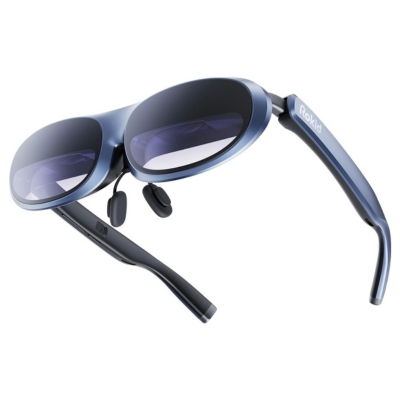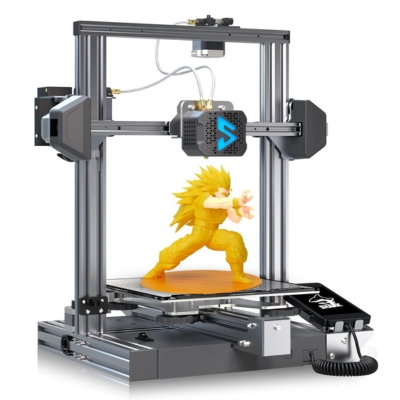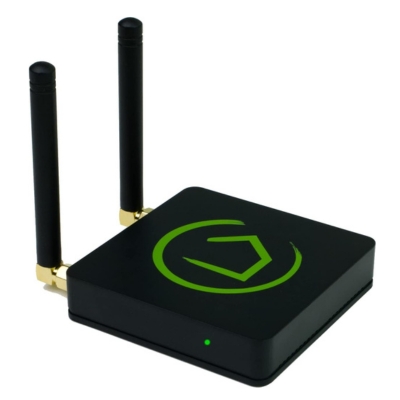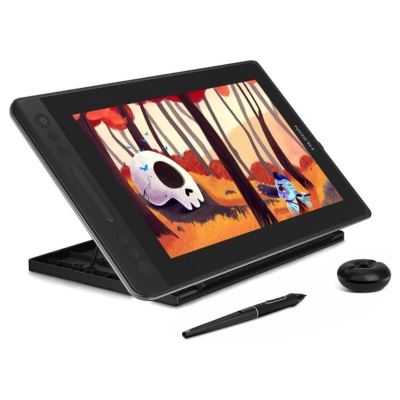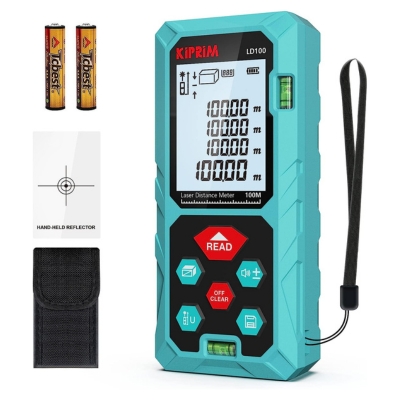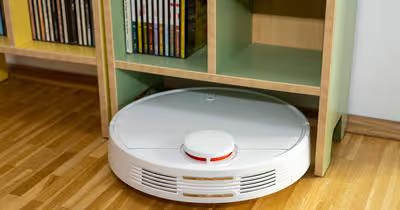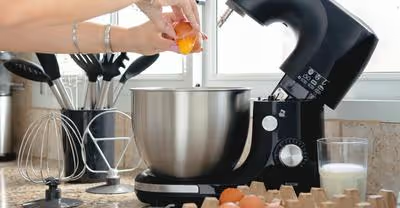Table of Contents
Best Gadgets for Interior Designers
In today's world, interior designers are constantly looking for tools and gadgets that can help them enhance their workflow and bring their ideas to many lives. With advancements in interior design technology, numerous devices are now available that can assist interior designers in their art.
These gadgets simplify day-to-day tasks, inspire creative art, and help designers communicate their ideas more effectively. From augmented reality headsets to smart home hubs, there is no shortage of innovative technologies that interior designers can adopt to make their jobs more accessible and more efficient.
The design process has become much more streamlined and precise with tools like digital sketchpads, laser measuring devices, and 3D printers. These gadgets enable designers to experiment with various ideas and visualize their design concepts before committing to any materials or structures.
Here's a table comparing the features of the best gadgets for interior designers.
1. Augmented Reality (AR) Headset
Augmented Reality (AR) Headset
Step into your designs with an AR headset. Visualize and modify spaces in real-time. Discover the future of interior design.
Specifications
The AR headset is an essential tool for interior designers, bringing forth advancements in design technology. These devices typically come with high-resolution displays, precise motion tracking capabilities, and broad fields of view for an immersive experience.
Popular AR headsets include the Meta Quest 2 (Oculus Quest 2) and the Epson Moverio BT-40S, which provide impressive specifications such as 1080p resolution and comfortable ergonomics.
Performance
Among the best gadgets for interior designers, AR headsets enable a seamless blend of the digital and physical worlds. Professionals can easily visualize design elements, play with different aspects, and make real-time changes.
The performance of an AR headset lies in its ability to deliver realistic holographic projections and maintain a stable connection to ensure a fluid user experience.
What Sets It Apart
AR headsets offer a unique approach to interior design by allowing designers to create and manipulate virtual objects in a real-world environment.
While traditional tools like mood boards and paper sketches help convey ideas, the AR headset transcends these methods by presenting interactive, life-like visuals and enhancing collaboration between designers and clients.
Recent Updates
The AR gadget market is constantly evolving, with brands like Apple announcing the Vision Pro mixed reality headset to revolutionize the industry. This innovation ensures that AR headsets expand in features and capabilities, resulting in more creative and practical applications for interior designers.
Benefits
- Real-time project visualization as seen in augmented reality in interior design examples.
- Enhanced collaboration with clients by providing an immersive and interactive experience.
- Seamless integration of technology in brainstorming ideas and presentations is fun to have.
Drawbacks
- Hardware costs: AR headsets can be expensive, making them prohibitive to a good designer.
- Learning curve: It may take some time for professionals to adapt to using AR headsets in their hard work.
- Limited third-party applications: The AR headset ecosystem may lack some niche software that caters specifically to interior designers a whole lot.
Who Should Buy It
AR headsets can be the best gifts if you’re an interior designer who embraces innovation and technology in your creative process (or you can surprise your friends with the gift). Those eager to provide clients with high-quality, interactive presentations and stay ahead of design trends should consider investing in an AR headset; it’s essential to them.
Where To Buy It
AR headsets can be purchased through various digital marketplaces, such as manufacturers' websites, technology retailers, or online platforms like Amazon.
2. 3D Printer
3D Printer
Unlock limitless creativity with a 3D printer. Rapid prototyping and custom decor await. Dive into the world of design innovation.
Specifications
3D printers vary in size, price, and functionality, but they all share the same basic principle: converting digital models into physical objects by building them layer by layer. Some popular 3D printer specifications include nozzle size, build volume, print speed, and resolution.
For instance, a professional 3D printer might possess a large build volume for creating sizable objects while having customizable settings to create intricate models for interior design projects.
Performance
The performance of a 3D printer directly impacts the quality of the final product made by an interior designer. The printer's resolution, print speed, accuracy, and the materials it can work with all contribute to its performance.
3D printers can use different materials, such as plastic, metal, ceramic, and wood, to create custom pieces for interior design projects.
What Sets It Apart
Using 3D printing technology, interior designers can create custom models, prototypes, and even finished products that would be costly or impossible to produce using traditional methods.
It allows them to innovate and experiment with new designs and materials on a smaller scale, reducing waste and production costs. The ability to create unique pieces tailored to the client's needs sets 3D printing apart from other methods for interior design.
Recent Updates
3D printing technology continually evolves, with new features, materials, and techniques becoming available regularly.
Some recent updates include faster printing speeds, multi-material printing, improved reliability, and even the introduction of augmented reality and VR technology in the design process. These advancements help interior designers save time, reduce waste, and create more detailed, high-quality designs.
Benefits
- Efficiency: 3D printing technology streamlines the entire design process, from prototyping to final production, saving interior designers considerable resources and time.
- Customization: Designers can create unique, personalized items tailored to their clients' needs and preferences.
- Experimentation: 3D printing allows designers to explore new ideas, materials, and techniques without a significant upfront investment.
Drawbacks
- Upfront Cost: The initial investment in a 3D printer can be steep, especially for high-quality, professional-grade machines.
- Learning Curve: Mastering 3D printing technology and CAD software can be challenging and time-consuming for some designers to match
Who Should Buy It
If you’re an Interior designer looking to enhance your creative abilities, save time, and create unique, customized products for your client, investing in a 3D printer is essential. It is especially beneficial for those designers who frequently work on bespoke projects or create custom furniture or decorative items.
Where To Buy It
Various online and physical retailers sell 3D printers catering to professionals, including specialized electronics stores like Amazon and larger retailers. Researching and comparing different models, features, and prices is crucial before purchasing.
3. Smart Home Hub
Smart Home Hub
Take control of the ambience with a smart home hub. Automation and customization are at your fingertips. Elevate your living spaces.
Specifications
Smart home hubs work as a central control system, connecting various smart gadgets within your interior design setup. These hubs support multiple technology protocols to ensure seamless integration with many smart devices, such as intelligent lighting, smart speakers, a smart lock, smart TV, and smart thermostats.
Performance
These hubs offer high performance and reliability, making it easy for interior designers to control and customize the connected devices. They are compatible with voice-controlled assistants like Amazon Alexa, Google Assistant, and Apple's Siri, enabling designers to utilize voice-control features and focus on their work.
What Sets It Apart
Smart home hubs provide a single access point for managing smart devices, making the interior designer's job easier without much effort. Smoothly integrating various devices eliminates the need for multiple apps and controllers. This centralization allows designers to quickly create their desired ambiance and setting, ultimately enhancing the overall design experience.
Recent Updates
Smart home hubs have significantly improved compatibility, user experience, and performance in recent years. There has been increased support for various third-party devices, thus expanding the range of devices controlled with a single hub. Some hubs even come with integrated screens, allowing visual controls and interactions.
Benefits
- Centralized control of various devices
- Improved energy efficiency and smart lock option
- Seamless integration with voice assistants
- Convenient, customizable settings
- Simplified user experience
Drawbacks
- Hubs may require regular software updates
- Compatibility issues with specific devices
- Initial Setup can be time-consuming
Who Should Buy It
If you’re an Interior designer looking to enhance your projects with smart technology, improve energy efficiency, and create customizable settings for your clients, you will benefit from using a smart home hub. A hub will simplify connecting and controlling multiple devices, giving designers more flexibility in their work.
Where To Buy It
Smart home hubs can be purchased at various retail outlets and online shops, such as Amazon, Best Buy, and the official websites of the respective manufacturers.
4. Digital Sketchpad/Tablet
Digital Sketchpad/Tablet
Precision meets creativity with a digital sketchpad. Enhance your design skills effortlessly. Redefine the art of interior design.
Specifications
One of the best gadgets for interior designers is a digital sketchpad or tablet, which combines creativity, design, and technology into one powerful tool. There are many tablets available with varying specifications to suit different needs.
For example, the Apple iPad Pro M2 and Microsoft Surface Pro are highly recommended for their display, processor, memory, and graphics capabilities.
Performance
Digital Sketchpads and tablets deliver outstanding performance, allowing interior designers to create detailed plans, color palettes, and sketches. Professionals utilizing these gadgets can expect efficient processing, high-resolution displays, and smooth navigation as they work on their projects.
What Sets It Apart
These tablets often come with a pen input and pressure sensitivity, giving designers precise control over their creations. Paired with powerful software like SketchBook, interior designers can experiment with style, material, and color, greatly expanding their creative abilities.
Recent Updates
As technology advances, tablet options continually improve. Recently, designers have taken advantage of faster processors, improved displays, and better-integrated hardware/software collaborations to enhance their interior design projects.
Benefits
- Portability: Tablets are compact and lightweight, making it easy for designers to work on the go or seamlessly collaborate with clients and colleagues.
- Convenience: The ability to create, edit, and store designs all in one place eliminates the need for physical paper drawings and sketches, just like music art.
- Efficiency: Tablets provide a streamlined workflow process by integrating everything designers need within a user-friendly interface.
Drawbacks
- Cost: High-end tablets with advanced features can be pretty expensive in the house.
- Learning curve: Some professionals may require time to familiarize themselves with new software and tools available on digital sketchpads.
Who Should Buy It
If you’re an Interior designer who wants to embrace technology to improve your design process, boost creativity, and work more efficiently, you should consider investing in a digital sketchpad or tablet. These devices can benefit professionals who travel frequently or collaborate with clients virtually.
Where To Buy It
There are multiple places to purchase digital sketchpads and tablets, such as directly from the manufacturers' websites, well-known technology retailers like Best Buy, and online marketplaces like Amazon. Researching and comparing devices before purchasing is important to ensure the tablet meets specific needs and fits within the designer's budget.
5. Laser Measuring Tool
Laser Measuring Tool
An accurate measurement made easy. Save time and increase precision with a laser measuring tool. Perfect your interior project well-being.
Specifications
A laser measuring tool is a must-have for designers and interior decorators. These tools offer superior accuracy, portability, and ease of use compared to traditional measuring tapes. Most laser measuring tools provide multiple functions, such as measuring distance, area, volume, and even indirect measurements using the Pythagorean theorem.
They also come with digital displays and memory storage, allowing designers to save and recall measurements quickly.
Performance
Speed and accuracy are crucial for interior decorating. Laser measuring tools provide faster measurements than tape measures and do not suffer from the inaccuracies that tape measures often encounter, such as sagging or slipping.
Laser tools operate by emitting a beam of light towards a target surface and then calculating the distance based on the time it takes for the natural light to bounce back. This technology ensures that laser measuring tools are reliable and precise, making them popular among interior designers.
What Sets It Apart
The laser measuring tools set themselves apart not only by their accuracy but also by their functionality. With features like Bluetooth connectivity, app integration, and even 3D modeling capabilities, these devices can significantly improve the efficiency of interior designers' work.
They can transfer measurements directly to compatible devices, such as smartphones, tablets, or computers, allowing the designers to seamlessly create layouts, floor plans, or other design elements.
Recent Updates
Laser measuring tools have introduced advanced features, such as augmented reality (AR) integration, which allows users to see a virtual representation of measured distances, areas, and volumes in real time. This technology simplifies the planning process for interior designers and helps them better communicate their ideas to clients.
Benefits
- Faster and more accurate measurements
- Elimination of errors from tape measures
- The device can connect to your phone and house device like a fan
- Digital displays, memory storage, and data transfer
- Enhanced functionality with app integration and Windows AR technology
Drawbacks
- It can be expensive, especially for high-end models with advanced features
- It may not work well on highly reflective surfaces or in bright sunlight, affecting your health
Who Should Buy It
If you’re an Interior designer, decorator, architect, or other professional involved in design and construction, you will find laser measuring tools invaluable. Due to their benefits, they can significantly improve the efficiency and accuracy of their work.
Where To Buy It
Laser measuring tools can be purchased from various sources, including hardware stores, online retailers like Amazon, and manufacturer websites like Bosch or Leica. When choosing a laser measuring tool, it's crucial to consider factors such as the measurement range, accuracy, connectivity, and additional features.
Future Trends and Emerging Tech in Interior Design and Construction
In the ever-evolving world of interior design, staying ahead of the curve is an inspiration to success as a big fun. Let's take a friendly and casual dive into the exciting realm of future trends and emerging technologies that promise to shape the future of interior design.
1. AI-Powered Design Assistance
Imagine having an AI-powered design assistant at your fingertips. These digital companions can suggest paint color palettes, furniture arrangements, and decor ideas based on your preferences and the latest trends. They learn your style over time, making each project a collaborative brainstorming session.
2. Biodegradable 3D Printing Materials
As sustainability continues to be a buzzword, the interior design industry is no exception. Biodegradable 3D printing materials are set to revolutionize how custom decor pieces are created on the phone. From eco-friendly lampshades to recyclable furniture, these materials look good and do good for the planet.
3. Holographic Interior Visualization
Get ready to step inside your designs. Holographic technology makes waves, allowing designers to create immersive, 3D virtual environments. Picture yourself walking through your room designs, making real-time adjustments. It's like being in a sci-fi movie but for real-life design projects.
4. Mood-Enhancing Smart Environments
Smart home technology is getting smarter. Imagine a home that adapts to your mood and needs. These systems can adjust lighting, temperature, and even scents to create the perfect ambiance. Whether you want a cozy winter retreat or a vibrant summer oasis, it's all at your fingertips.
5. Virtual Reality Home Tours
Virtual reality isn't just for gaming. It's becoming a powerful tool for interior designers and homeowners alike. Take your client on virtual tours of their future homes, allowing them to experience the space before it's built. It's a game-changer for design presentations and home-buying decisions.
Recent Articles



